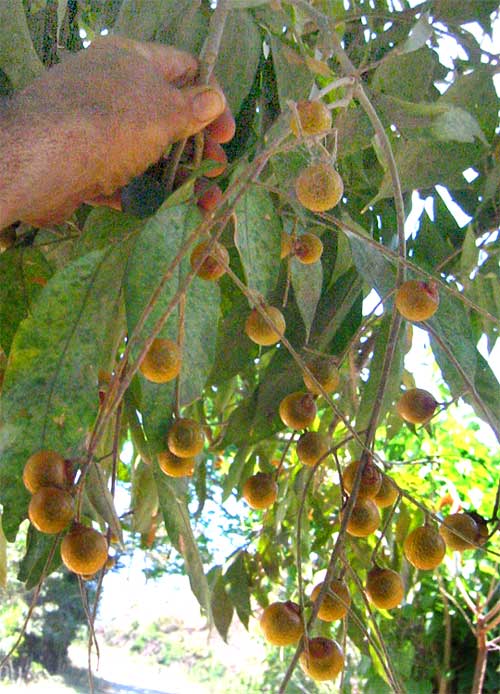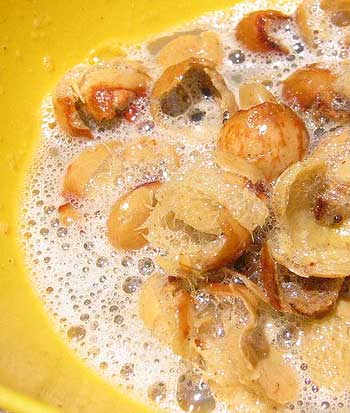Excerpts from Jim Conrad's
Naturalist Newsletter
from the April 21, 2008 Newsletter written in the community of 28 de Junio, in the Central Valley 8 kms west of Pujiltic, elev. ~700m (2300ft), ~N16.331°, ~W92.472°; southeastern Chiapas state, MÉXICO
SOAPBERRY
These days a handsome tree growing about 30 feet tall with pinnately compound leaves a bit like those of Pecan trees is fruiting abundantly, and in the old days its golden-brown fruits were highly regarded. That's it below:

The tree is Soapberry, SAPINDUS SAPONARIA, and you can see from the Latin name that Linnaeus was thinking "soap" when he named the species. "Sap-indus" was his "Indian soap," and saponaria was just more soap. The species gives its name to its whole family, the Soapberry Family, the Sapindaceae, which also includes Litchi Trees, Goldenrain-Trees and Balloon-Vines. Here Soapberry is called Jaboncillo, jabón being "soap," of course. To humans everyplace, this tree simply means "soap." I soaked some fruits a couple of days, squeezed them, and here you see the sudsy results.

I didn't produce the sudsy water the traditional way, which they tell me is much more effective. The time-honored recipe for making soap from fruits begins with "Dry the fruits until they can't be dried any more, then the señora on her stone metate grinds and grinds until she has pure dust... " Then you use the dust pretty much as if it were laundry detergent.
Despite my half-hearted efforts, the sudsy water I got cut right through greasy, gritty stuff on my hands, and the suds seemed to last longer than equivalently sudsy water produced by commercial detergent. It even left my hands smelling a little fruity.
Since the fruits' seeds are extremely hard I've asked several people if washing clothing with homemade Soapberry powder doesn't leave little flecks of fruit and seedcoat on the clothing. People say that there's no problem, or maybe the question just doesn't register. Flecks on clothing are more of a Northern concern.
Even hanging on the trees, the honey-colored fruits are hard, and their black seeds are even harder. You can shake the fruits and hear seeds knocking around inside them. When any campesino past age 40 or so sees you admiring the tree he's bound to tell you that the black seeds used to be what kids used as canicas, or marbles. Below, you can see several canicas in my hand.
